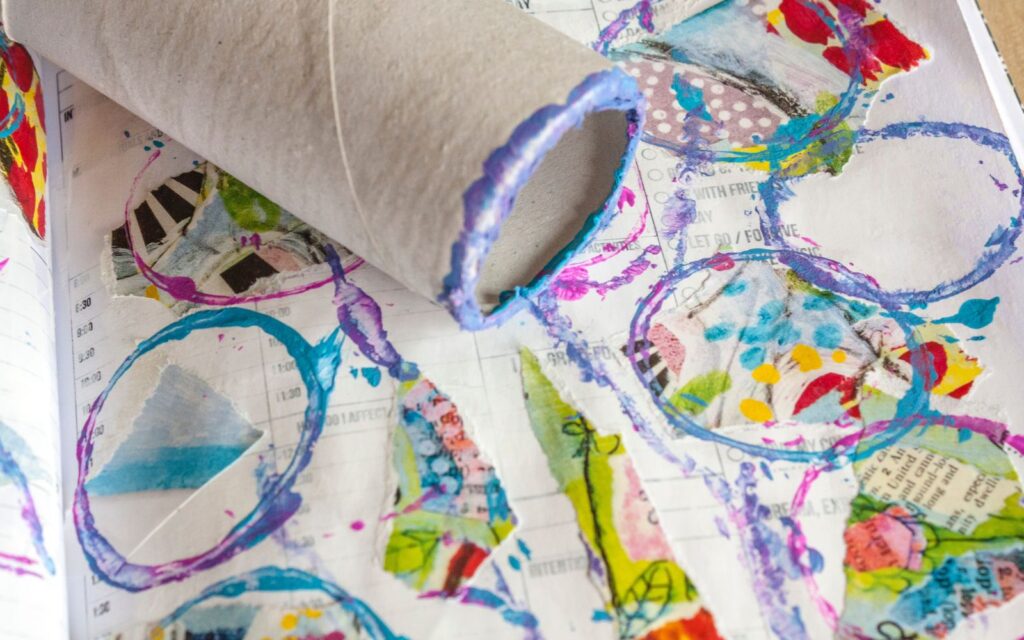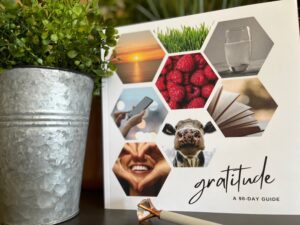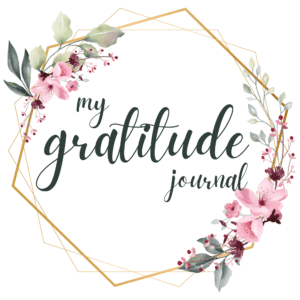Introduction to Visual Journaling

We often turn to writing to express our thoughts and emotions. But did you know that there’s another powerful way to connect with your inner world? Visual journaling is an expressive and transformative practice that combines the power of art and writing to help you grow personally. This article will guide you through the world of visual journaling, providing techniques, prompts, and insights to help you unlock its potential.
What is Visual Journaling?
Visual journaling, also known as art journaling, is a creative practice that incorporates both visual and written elements into a journal or sketchbook. By combining writing with various artistic mediums, you can create a richer and more nuanced record of your thoughts, emotions, and experiences.
Benefits of Visual Journaling
This expansive form of journaling offers numerous benefits for personal growth, including:
Emotional Expression: Visual journaling allows you to express complex emotions that may be difficult to convey through writing alone. The use of colors, shapes, and images can provide a deeper understanding of your feelings and experiences.
Enhancing Creativity: By experimenting with different artistic techniques, you can develop your artistic skills, foster creative thinking, and discover new ways to express yourself.
Stress Reduction: Engaging in creative activities has been shown to reduce stress levels and promote relaxation. Visual journaling can serve as a calming and therapeutic outlet.
Improved Self-Awareness: Reflecting on your thoughts and emotions through visual journaling can increase self-awareness, helping you gain a better understanding of your mental and emotional landscape.
Getting Started with Visual Journaling
To start your visual journaling journey, consider the following steps:
Choosing a Medium: Select a journal or sketchbook that suits your needs. You may prefer a small, portable journal or a larger sketchbook with heavier paper to accommodate a variety of mediums.
Setting Up Your Workspace: Create a comfortable and inspiring workspace with your preferred art supplies, such as pencils, markers, paints, and collage materials.
Establishing a Routine: Set aside regular time for your visual journaling practice. Consistency is key to reaping the benefits of this creative outlet.
Techniques and Approaches
There are numerous techniques and approaches you can use in your visual journal, including:
Collage: Assemble images, textures, and words from various sources to create a visual narrative.
Sketching and Drawing: Use pencils, pens, or charcoal to create illustrations that capture your thoughts and emotions.
Painting: Experiment with watercolors, acrylics, or oils to express your feelings and experiences through color and form.
Mixed Media: Combine different artistic techniques and materials, such as incorporating photographs, fabric, or found objects into your journal pages.
Integrating Writing into Your Visual Journal
Writing is an essential component of visual journaling, as it allows you to capture your thoughts, reflections, and insights in a more structured way. Here are some tips for integrating writing into your visual journal:
- Use words and phrases to complement your visual elements, creating a cohesive narrative that combines imagery and text.
- Experiment with different writing styles, such as poetry, stream-of-consciousness, or structured reflections, to express your thoughts and emotions.
- Add captions, quotes, or song lyrics to your visual journal pages to provide additional context or inspiration.
- Use writing prompts to explore specific themes or topics in your visual journal.
Prompts and Ideas
Sometimes, it can be challenging to know where to begin with your visual journal. Here are some prompts and ideas to help you get started:
- Create a vision board that represents your goals, dreams, and aspirations.
- Illustrate a significant event or memory from your past.
- Use a specific color to represent a particular emotion, and create a page that embodies that feeling.
- Explore a theme or concept, such as self-love, gratitude, or resilience, through a combination of imagery and writing.
- Respond to a quote, poem, or song that resonates with you, visually interpreting its meaning and significance in your life.
Overcoming Obstacles and Challenges
As with any creative endeavor, you may encounter obstacles and challenges when starting your visual journaling practice. Here are some tips to help you overcome these hurdles:
- Embrace imperfection: Your visual journal is a space for exploration and growth, not perfection. Give yourself permission to create without judgment.
- Be patient: Developing artistic skills takes time and practice. Don’t be discouraged if your initial attempts don’t meet your expectations.
- Set realistic goals: Start with small, attainable goals to build your confidence and momentum.
- Seek inspiration: Look to other artists, books, or online resources for ideas and motivation.
Sharing Your Visual Journal with Others
Sharing your visual journal can be a rewarding experience that allows you to connect with others, receive feedback, and gain new perspectives. Consider joining a local or online community, attending workshops or classes, or simply sharing your work with friends and family.
Conclusion
Visual journaling is a powerful tool for personal growth, offering a unique blend of artistic expression and introspective writing. By exploring different techniques, prompts, and ideas, you can unlock the potential of this creative practice and experience its transformative benefits.
FAQs
- Do I need artistic experience to start visual journaling? No, visual journaling is for everyone, regardless of your artistic background. The focus is on self-expression and personal growth, not technical perfection.
- What materials do I need to start? A journal or sketchbook, along with basic art supplies like pencils, pens, markers, or paints, is sufficient to begin. As you progress, you may want to explore additional mediums and materials.
- How often should I engage in visual journaling? The frequency of your practice is entirely up to you. Some people find daily journaling beneficial, while others may prefer a weekly or monthly routine.
- Can I combine different artistic techniques in my visual journal? Absolutely! Mixed media and experimentation are encouraged in this form of journaling. Feel free to combine different techniques and materials to create a unique and personal visual language.
- Is visual journaling only for self-reflection, or can it be used for other purposes? While visual journaling is often used for self-reflection and personal growth, it can also serve other purposes. For example, you can use your visual journal to document your travels, explore your dreams and aspirations, or record your creative ideas and inspirations.
Remember, the key to visual journaling is to make it your own and adapt it to suit your needs and goals. Happy journaling!




